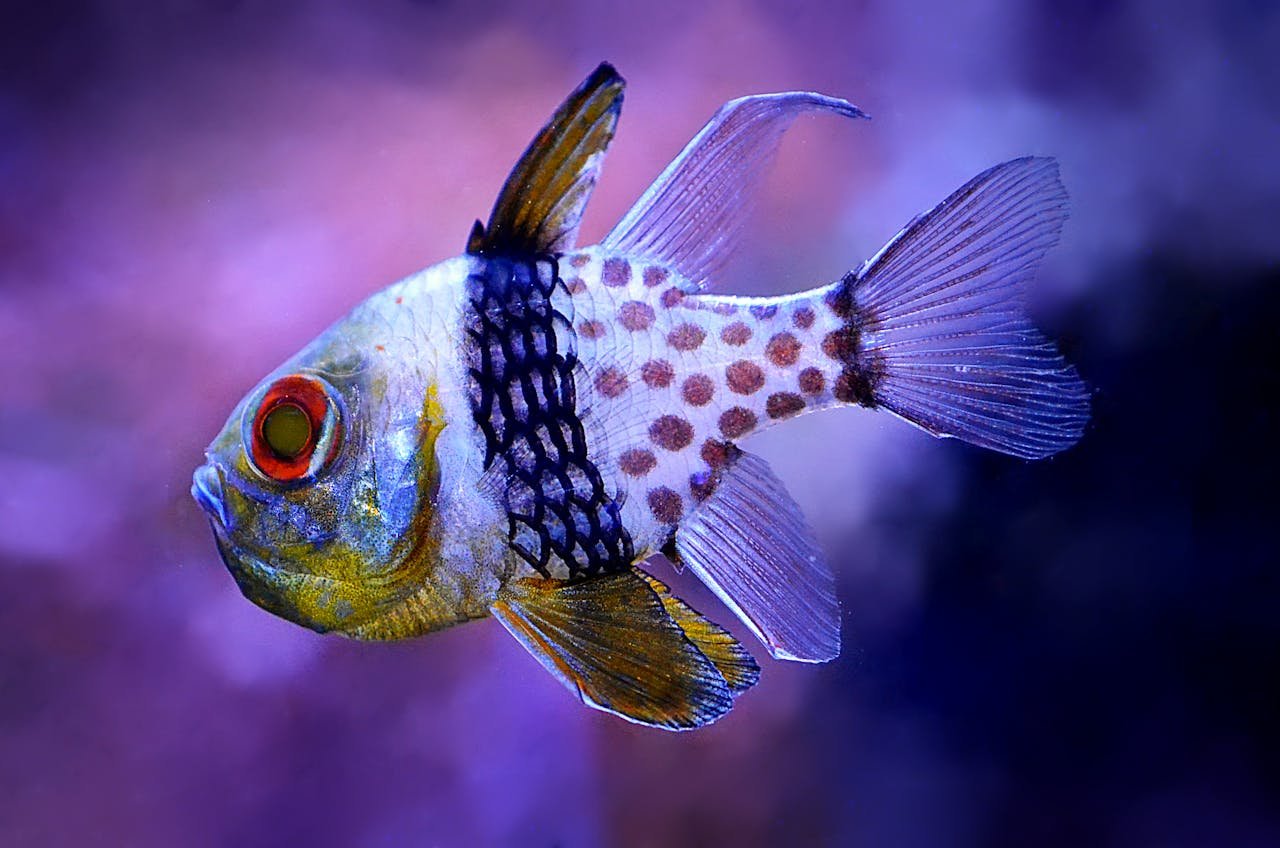The debate over whether fish can experience pain has been a contentious issue in the field of animal welfare and conservation. While some argue that fish lack the necessary neurological structures to perceive pain, others believe that their complex nervous systems indicate the potential for pain perception. Understanding fish pain is not only important for ensuring their welfare but also for informing conservation efforts.
Fish are often overlooked when it comes to discussions about animal welfare, as their pain perception is not well understood or widely recognized. However, recent research has shed light on the anatomy and physiology of fish nervous systems, suggesting that they may indeed be capable of experiencing pain. This has significant implications for how we treat and interact with fish, both in the wild and in captivity.
Key Takeaways
- Fish have a nervous system that is capable of processing pain signals.
- The evolution of pain perception in fish suggests that it is an adaptive response to protect against injury.
- Fish exhibit behavioral responses to noxious stimuli, indicating that they experience pain.
- Nociceptors play a role in fish pain perception, similar to other animals.
- Stress can have a negative impact on fish welfare, highlighting the need for pain mitigation strategies.
- The ethics of fishing and fish farming should consider the potential for pain and suffering in fish.
- There is potential for pain mitigation in fish through improved husbandry practices and the use of analgesics.
- Further research is needed to better understand fish pain and develop effective pain management strategies.
- Recognizing fish pain has implications for animal welfare and conservation efforts.
- Overall, the debate over fish pain highlights the need for greater consideration of the welfare of all animals, including those that are often overlooked.
The anatomy and physiology of fish nervous systems
Fish have a nervous system that is similar in many ways to that of mammals, including a brain, spinal cord, and peripheral nerves. However, there are also some key differences between the two. For example, fish lack a neocortex, which is thought to be responsible for higher cognitive functions in mammals. Despite this difference, fish have a complex nervous system that allows them to perceive and respond to their environment.
The complexity of fish nervous systems suggests that they may have the capacity to experience pain. Fish have specialized nerve cells called nociceptors that are responsible for detecting and transmitting pain signals. These nociceptors are found throughout the body and are connected to the central nervous system, allowing fish to respond to noxious stimuli.
The evolution of pain perception in fish
The evolution of pain perception in fish is a topic of much debate among scientists. Some argue that fish have evolved the ability to perceive pain as a means of survival, allowing them to avoid potentially harmful situations. Others believe that pain perception in fish is simply a byproduct of their complex nervous systems and does not serve any adaptive purpose.
The evolutionary history of pain perception in fish is still not well understood. However, studies have shown that fish exhibit similar behavioral and physiological responses to noxious stimuli as mammals, suggesting that they may indeed experience pain. For example, fish have been observed to exhibit protective behaviors, such as rubbing or shaking the affected area, when exposed to painful stimuli.
The behavioral responses of fish to noxious stimuli
| Behavioral Responses of Fish to Noxious Stimuli | Metrics |
|---|---|
| Escape response | Latency, distance, speed, direction |
| Alarm response | Duration, frequency, intensity |
| Freezing response | Duration, frequency, intensity |
| Aggressive response | Duration, frequency, intensity |
| Feeding response | Duration, frequency, intensity |
Fish can experience a variety of noxious stimuli, including physical injuries, chemical irritants, and thermal stress. When exposed to these stimuli, fish exhibit a range of observable behavioral responses that are indicative of pain. These responses can include changes in swimming behavior, increased aggression or fearfulness, and reduced feeding or reproductive activity.
In addition to these behavioral responses, fish also show physiological changes in response to noxious stimuli. For example, they may experience an increase in heart rate and blood pressure, as well as changes in hormone levels. These physiological changes are similar to those observed in mammals experiencing pain and further support the idea that fish can perceive pain.
The role of nociceptors in fish pain perception
Nociceptors play a crucial role in the perception of pain in fish. These specialized nerve cells are responsible for detecting and transmitting pain signals from the periphery to the central nervous system. Nociceptors are found throughout the body of fish and are particularly concentrated in areas that are vulnerable to injury, such as the mouth and fins.
The presence and distribution of nociceptors in fish suggest that they have the capacity to perceive pain. Studies have shown that when these nociceptors are activated by noxious stimuli, they release neurotransmitters that transmit pain signals to the brain. This indicates that fish have a similar neural pathway for pain perception as mammals.
The impact of stress on fish welfare

Stress can have a significant impact on the welfare of fish and may also influence their perception of pain. When fish are exposed to stressful conditions, such as overcrowding or poor water quality, they can experience physiological and behavioral changes that can exacerbate pain perception.
Stress can affect fish in a variety of ways. Physiologically, it can lead to an increase in cortisol levels, which is a stress hormone that can suppress the immune system and impair the fish’s ability to cope with pain. Behaviorally, stress can cause fish to exhibit abnormal behaviors, such as increased aggression or reduced feeding, which can further compromise their welfare.
The ethics of fishing and fish farming
The ethics of fishing and fish farming are complex issues that are closely tied to the debate over fish pain. Many people argue that it is unethical to cause unnecessary harm or suffering to any sentient being, including fish. This has led to calls for more humane fishing practices and the development of alternative methods of obtaining fish for food.
In addition to ethical considerations, there are also environmental and conservation concerns associated with fishing and fish farming. Overfishing and destructive fishing practices can have devastating impacts on fish populations and marine ecosystems. Recognizing and addressing fish pain is therefore not only important for ethical reasons but also for the long-term sustainability of our oceans.
The potential for pain mitigation in fish
There are various methods available for reducing pain in fish, although they are not widely implemented in commercial fishing or aquaculture practices. Anesthesia and analgesia can be used to alleviate pain during procedures such as fin clipping or surgery. However, these methods can be challenging to administer effectively in fish due to their unique physiology.
One of the main challenges in pain mitigation for fish is determining the appropriate dosage and administration method for anesthesia and analgesia. Fish have different metabolic rates and sensitivities to drugs compared to mammals, making it difficult to find a one-size-fits-all solution. Additionally, there are concerns about the potential impact of these drugs on fish welfare and the environment.
The need for further research on fish pain
Despite the progress that has been made in understanding fish pain, there are still many gaps in our knowledge. More research is needed to fully understand the mechanisms of pain perception in fish and to develop effective methods for pain mitigation. This research is crucial for improving fish welfare and informing conservation efforts.
Further research on fish pain can also help to raise awareness and change public attitudes towards fish. By demonstrating that fish are capable of experiencing pain, we can encourage more compassionate treatment of these animals and promote sustainable fishing practices. This research can also inform policy decisions and regulations surrounding the use of fish for food and recreation.
The implications of fish pain for animal welfare and conservation
Recognizing and addressing fish pain is not only important for ethical reasons but also for the conservation of our oceans. Fish are sentient beings that deserve to be treated with compassion and respect. By understanding their capacity for pain and implementing measures to mitigate it, we can improve their welfare and ensure the long-term sustainability of our marine ecosystems.
Increased awareness and research on fish pain can also help to change public attitudes towards fish. By highlighting their sentience and vulnerability, we can encourage more responsible fishing practices and promote the conservation of fish populations. Ultimately, recognizing and addressing fish pain is a crucial step towards creating a more compassionate and sustainable future for all animals.
If you’re interested in the topic of animal welfare, you might also want to check out this thought-provoking article on whether fish can feel pain. Recent studies have shed light on this controversial issue, raising questions about the ethical implications of fishing and fish farming practices. To learn more about this fascinating subject, click here: Can Fish Feel Pain?




















+ There are no comments
Add yours